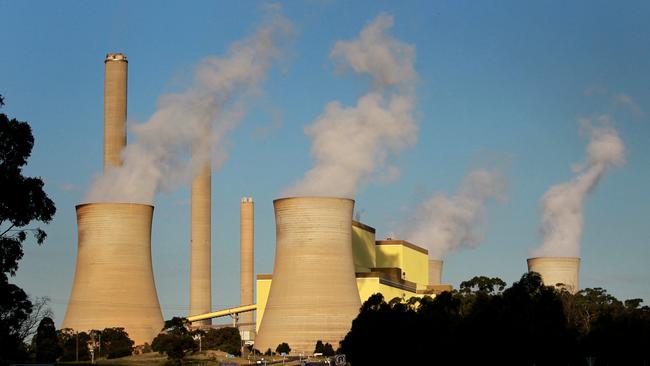
Central to Russia’s invasion calculus was its ability to weaponise energy and related supply chains by threatening to cut off critical supplies as a means of deterring Western European responses. Fast-forward eight months and Russia’s situation is increasingly unclear. But what is clear is that Europe and Britain are staring at a deep energy crisis that will cause severe suffering, lead to enormous economic dislocation and test Western resolve for Ukraine.
Faced with energy shortages that started with a wind drought last year, European governments are dealing with the fundamental need to keep the lights on and people warm.
Germany is reversing two decades of energy and climate policy by reopening coal plants, scrambling to secure new gas supplies and keeping open nuclear power stations. Likewise, Britain is embarking on a major program to build nuclear plants and offshore wind farms combined with an unprecedented £150bn emergency energy support package for households and businesses to address spiralling energy costs.
Yet all of this will not stave off an energy crisis this coming northern winter that will hit citizens and industry in ways that will reverberate for years. Only this week, the UK power grid operator warned of blackouts on the coldest days in January and February.
So how is this relevant to Australia? Recent announcements by AGL and the Queensland government about closing coal power stations, along with other announced closures, including Alinta bringing forward the shut-down of Loy Yang B, means that in just over a decade more than 70 per cent of actual power generation in NSW, Victoria and Queensland is slated to close.
All of this – according to various governments and energy regulators speaking at the AFR’s Energy and Climate Summit last week – is to be replaced by a combination of renewables, storage, smart meters and peaking gas.
Despite the best intentions, Australia runs the real risk the transition will not occur on the proposed timetable – a point repeatedly made at the summit. Three issues stand out.
Building transmission lines is an Achilles’ heel of the energy transition. Exhortations to just build new power lines ignores the real world where communities need to be engaged and supportive. If the experience with the Western Victoria Transmission Network project is anything to go by, there will be lots of divided and angry communities in the eastern states that will become political issues that will only add to delays and increase costs. Already there are signs of this emerging in the New England region.
Second, Russia’s invasion of Ukraine highlights the need to avoid energy supply chains dominated by countries whose world views are inimical to ours.
The Net Zero Australia report from August outlined the vast scale of spending, infrastructure, land and skills required for Australia to achieve a net-zero outcome with renewable energy, in particular the 20- to 30-fold increase in solar power generation by 2040 – just over 17 years away.
As a country that imports 90 per cent of its solar panels from China, Australia needs to consider the energy security implications of this – a point reinforced to a Washington DC audience recently by Climate Change and Energy Minister Chris Bowen.
Likewise, China dominates critical minerals processing critical for energy storage.
Finally, the need for a Plan B on energy if Australia is to seriously decarbonise without facing the same risks seen in Europe. In this case, at least considering the one technology capable of delivering industrial-scale power with zero emissions – nuclear.
Currently banned in Australia, nuclear offers an opportunity to seriously decarbonise energy supplies without the risks associated with dependence on China and the emerging autocratic bloc. Australia could become an integral part of energy supply chains controlled by like-minded countries that share a similar geostrategic outlook.
Australia has the world’s largest uranium resource and last year was the second-largest producer. Yet nuclear power is viewed as too difficult, too expensive and politically too challenging. But the response to the AUKUS nuclear submarine announcement suggests Australians are more positive about the technology than assumed by narrow-cast polling and selective claims by opponents. Also, recent Australian studies have shown new nuclear technologies such as small modular reactors being licensed in the US, Britain and Canada could be, on a system basis, the cheapest zero-emission power source available for Australia.
Irrespective that both sides of politics ruled out a commercial nuclear industry at the time of the submarine announcement, the reality is Australia already has a medical research reactor in suburban Sydney and will need to develop a new substantial nuclear-focused industry to manage the submarines. This would take about a decade to put in place – about the same time being proposed to close our baseload power stations.
Energy is a national security risk. As Europe has shown, constraining energy options amplifies that risk. Australia should be having an open and honest conversation about the energy security realities it now confronts, and that means having a Plan B that at least considers nuclear energy.
Patrick Gibbons is a former diplomat and policy adviser and is now a partner with business consultancy Orizontas.



One consequence of Russia’s brutal, shambolic invasion of Ukraine is the need for a clear-eyed reassessment of energy sources by all onlookers, and for Australia that means being honest about the challenges confronting the energy transition, not least the need for a Plan B that should consider nuclear power.